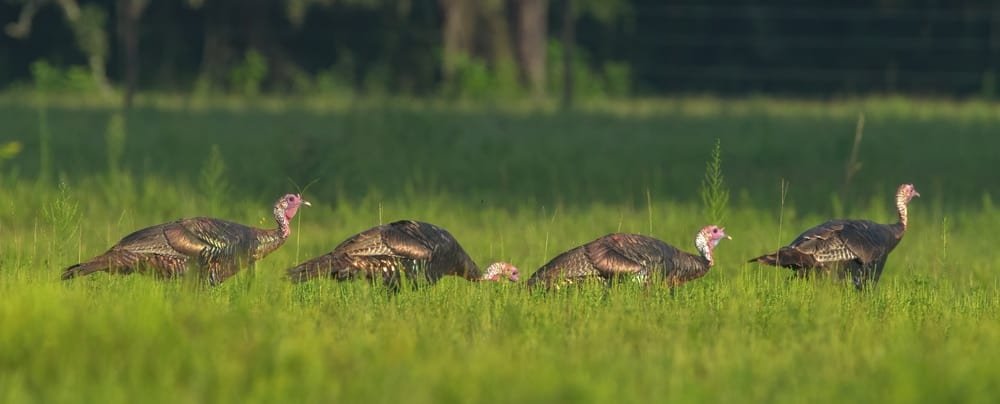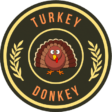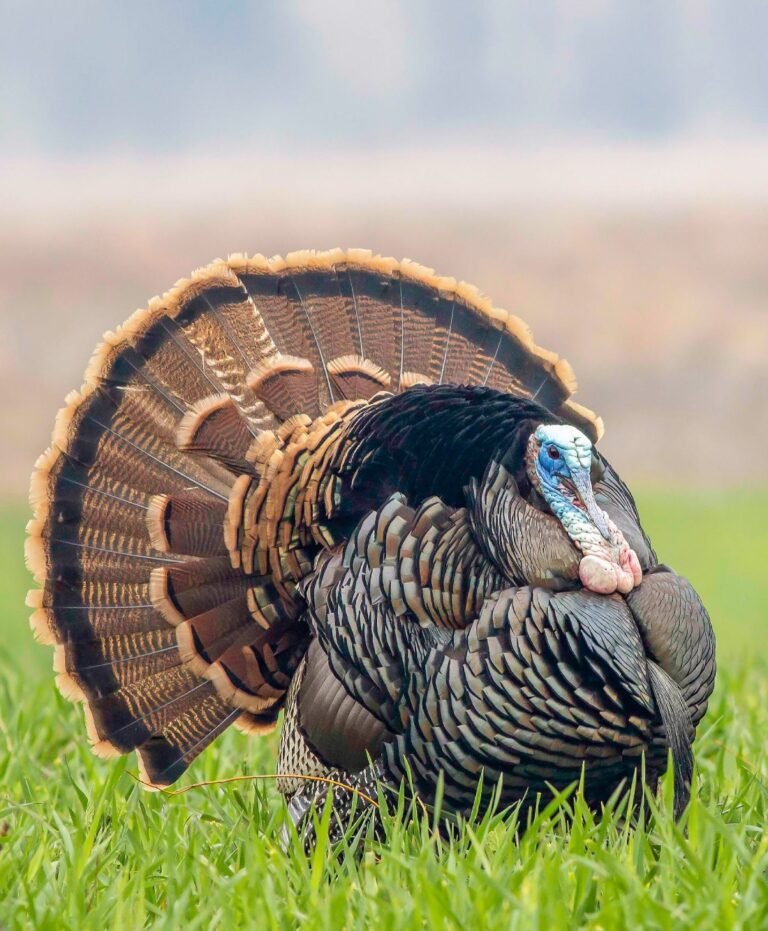Turkey Hunting with a Bow – What You Need to Know Now
Turkey hunting with a bow is a cherished and widely embraced outdoor pursuit that has captured the hearts of hunters across the globe. With its roots tracing back to Native American cultures, turkey hunting has evolved into a time-honored tradition that seasoned hunters and beginners enjoy.
It offers an exhilarating blend of strategy, skill, patience, and anticipation that sets it apart from other forms of hunting. However, for those seeking an extra layer of challenge and an intensified sense of accomplishment, turkey hunting with a bow presents a unique experience.
Brief Overview of Turkey Hunting
Turkey hunting has gained immense popularity due to its thrilling nature and accessibility. The pursuit involves successfully locating wild turkeys in their natural habitats – fields, woodlands, or even mountains – to harvest one for sustenance or sport.
Although it can be traced back centuries when Native Americans hunted turkeys using primitive tools and techniques, modern-day turkey hunting has embraced innovation while staying true to its ancestral roots. The allure lies in the elusive nature of these magnificent birds.
Turkeys possess sharp senses and heightened awareness, making them challenging prey for hunters. Their exceptional vision allows them to detect movement from afar, while their acute hearing enables them to perceive even faint sounds caused by human presence.
Additionally, their ability to adapt quickly makes them excellent at evading danger. These factors contribute to the thrill of turkey hunting, requiring hunters to employ stealthy tactics, strategic planning, and natural camouflage techniques – all while fully immersed in nature’s beauty.
The Unique Challenges and Excitement
Its added difficulty level sets turkey hunting with a bow apart from other methods.
While firearms provide hunters with greater accuracy over longer distances, using a bow requires getting much closer to these wary birds—a feat that demands enhanced skills both as an archer and outdoorsman.
Hunting turkeys with a bow compels hunters to master the art of camouflage, concealment, and precise shot placement.
The excitement lies in successfully harvesting a turkey and outsmarting one of nature’s most elusive creatures. The challenge is multifaceted, involving the ability to call turkeys using various vocalizations such as yelps, purrs, clucks, and gobbles – mimicking their natural language to lure them within bow range.
After painstakingly setting up blinds or perfecting stealthy stalking techniques, archers must draw their bows undetected and release an arrow with precision and accuracy to hit vital areas.
Turkey hunting with a bow offers a unique blend of adventure and skill that appeals to seasoned hunters seeking new challenges and novices eager to immerse themselves in the great outdoors.
Its popularity continues to grow as more people recognize that it requires not only mastery of archery but also an understanding of turkey behavior and habitat.
Join us as we delve deeper into this thrilling pursuit by exploring various aspects of turkey hunting with a bow, from equipment selection and scouting techniques to hunting strategies honed for maximum success.

Understanding Turkey Behavior
Discuss the different species of turkeys found in North America
Regarding turkey hunting with a bow, it is essential to have a solid understanding of the different turkeys found in North America.
The two main species are the Eastern wild turkey (Meleagris gallopavo silvestris) and the Rio Grande wild turkey (Meleagris gallopavo intermedia).
The Eastern wild turkey is most prevalent in the eastern half of the United States, while the Rio Grande wild turkey inhabits regions west of the Mississippi River. These two subspecies differ slightly in appearance and behavior.
Eastern turkeys are generally larger and have darker feathers than their Rio Grande counterparts. They also tend to roost in taller trees, making them more susceptible to ambush tactics.
On the other hand, Rio Grande turkeys often roost in lower vegetation or near water sources. Understanding these distinctions allows hunters to tailor their strategies accordingly.
Explore their habitat preferences and daily patterns
To improve your chances of success when bow hunting for turkeys, it is crucial to familiarize yourself with their habitat preferences and daily patterns.
Turkeys typically prefer areas where they can find suitable nesting sites, food sources, and roosting spots. These birds thrive in diverse habitats such as open woodlands, mixed forests, agricultural fields with scattered woodland patches, and even brushy areas.
During the spring breeding season, male turkeys or “toms” tend to establish territories within these preferred habitats.
They gobble at dawn from treetop roosts to attract females or “hens.” Understanding this daily pattern allows hunters to set up ambush locations early in the morning near potential roosting sites.
Moreover, understanding their feeding habits is equally important for successful bow hunting. Turkeys are omnivorous birds that feed on vegetation, insects, and small reptiles or amphibians.
They often forage in open areas like fields or meadows during the day, searching for seeds, berries, and insects. Knowing when and where they feed can help hunters plan their approaches accordingly.
Understanding turkey behavior – crucial for bow hunting
Understanding turkey behavior is vital for achieving success in bow hunting. These majestic birds have incredibly keen eyesight and hearing abilities, alerting them to potential dangers.
By familiarizing yourself with their habits and tendencies, you can exploit their vulnerabilities while minimizing your chances of being detected.
For instance, knowing that turkeys rely heavily on their sense of hearing allows you to take extra precautions when drawing your bow.
You may need to draw your bow very slowly or wait until a turkey is distracted by feeding or drumming its wings to avoid alerting them to your presence. Understanding their preferred movement paths can help you anticipate where they might be within range.
A thorough knowledge of turkey behavior also enables you to use the appropriate calling strategies effectively. Turkeys are highly vocal creatures, communicating through calls such as gobbles, clucks, purrs, and yelps.
By mimicking these calls accurately using a diaphragm or box call, hunters can lure turkeys toward their position with more precision.
Comprehending the different species of turkeys found in North America, their habitat preferences, and daily patterns is paramount for successful bow hunting.
This knowledge allows hunters to choose suitable locations for ambushes based on individual species’ tendencies and behaviors.
Understanding turkey behavior helps hunters adapt their strategies accordingly by utilizing effective calling techniques while remaining undetected through careful movements during the hunt.

Selecting the Right Bow and Arrows for Turkey Hunting
When it comes to turkey hunting with a bow, selecting the right equipment is paramount. The compound bow and recurve bow are the two main bows commonly used. Each has its advantages depending on the hunter’s preference and skill level.
The compound bow is popular among turkey hunters due to its modern design and advanced technology. It features a system of pulleys and cables that significantly reduce draw weight when fully drawn, allowing for better accuracy and ease of aiming.
This reduced weight at full draw is particularly beneficial when immediate shots are required, such as when turkeys suddenly appear within range. On the other hand, some hunters prefer using a recurve bow for turkey hunting.
The simplicity of its design offers advantages such as quieter operation, lighter weight, and greater maneuverability in tight spaces like thick brush or dense forests.
Although drawing requires more strength than a compound bow, many seasoned hunters appreciate the challenge and enjoy honing their archery skills with this traditional weapon.
Choosing Appropriate Arrow Weight and Broadheads
The appropriate arrow weight is crucial for maximizing accuracy and penetration when hunting turkeys with a bow. Generally, heavier arrows are preferred as they have increased kinetic energy upon impact, ensuring better penetration through the turkey’s feathers and into vital organs.
In addition to arrow weight, choosing suitable broadheads is essential for effective turkey hunting. Broadheads specifically designed for small game or turkeys offer features such as wider cutting diameters (around 2 inches) that create large entry wounds necessary for quick kills.
Also important is choosing between mechanical broadheads (which open upon impact) or fixed-blade broadheads (with blades that remain exposed). While both types can be effective, practicing with the chosen broadheads is crucial to becoming familiar with their flight characteristics.
Mastering Archery Skills Specific to Turkey Hunting
A successful turkey hunt requires mastering specific archery skills tailored to these elusive birds. One important technique is drawing your bow without being detected by the keen eyes of a turkey.
Practice slow and controlled movements, ensuring your draw is silent and smooth, minimizing any unnecessary motion that may alert nearby turkeys. Another crucial skill is aiming for vital areas in a turkey’s body.
Unlike larger game animals, turkeys have small vital zones, primarily consisting of the head and neck region. Practicing accurate shot placement by aiming at spots such as the base of the neck or just above where the feathers meet will greatly increase your chances of achieving clean kills.
Furthermore, practicing shooting from various positions is essential for adaptability in different hunting scenarios. Whether standing, kneeling, or sitting in a blind or natural cover, simulating these real-life situations during practice sessions will enhance your shooting skills and build confidence when faced with challenging hunting conditions.
Scouting Techniques
Effective scouting methods to locate turkeys before the hunt
Investing time and effort in scouting is essential before embarking on a turkey hunting expedition with a bow. Scouting helps you understand the local turkey population and their behaviors, enabling you to make informed decisions during the hunt.
One effective scouting method is conducting pre-season surveys by traversing potential hunting areas and looking for signs of turkey activity. Keep an eye out for tracks in the dirt, scratched-up leaf litter indicating feeding areas, and scattered feathers that may suggest roosting sites.
Using trail cameras to monitor turkey movement patterns
Trail cameras have become invaluable tools for modern hunters, offering a non-intrusive way to monitor wildlife movement patterns. Placing trail cameras strategically along game trails or near known roosting areas can provide valuable insights into turkeys’ daily routines and habits in your hunting area.
Please set up your camera at a suitable height (around the waist or chest level) and angle it towards potential crossing points or food sources. By reviewing the captured images or videos, you can identify peak activity times, preferred travel routes, and even individual turkey behavior.
Identifying roosting sites and feeding areas through observation
Observation is another crucial element of successful scouting. Spend time glassing fields at dawn or dusk when turkeys are most active. Look for groups of turkeys flying up into trees as they prepare to roost for the night; this will give you an idea about potential roosting sites.
During daylight hours, observe their feeding patterns by carefully watching where they go to scratch for insects or browse for seeds or berries. Pay attention to areas with fresh droppings, tracks, feathers scattered around dust baths, or disturbed vegetation as indicators of active feeding zones.
Utilizing calls and decoys in scouting
Calls and decoys can significantly enhance your scouting efforts by attracting turkeys, allowing you to observe their reactions and learn more about their behavior. Different types of calls produce various sounds that imitate turkey vocalizations.
Diaphragm calls, operated by placing them inside the mouth, create realistic hen sounds like yelps, clucks, and purrs. Box calls produce raspy yelps and cuts when scraped against each other, while slate or pot calls mimic soft purrs or high-pitched yelps.
Experiment with different call types to see which works best for your hunting area. When it comes to decoys, they can be an excellent tool for enticing turkeys into range during scouting missions.
Hen decoys are commonly used to attract gobblers and hens, conveying a sense of security and companionship. Place decoys strategically near feeding areas or known roosting sites for maximum effect.
Ensure they are visible from a distance but positioned safely out of reach from the nearby cover that could potentially hide predators. Scouting is an essential aspect of turkey hunting with a bow, as it allows you to gain valuable insights into turkey behaviors before the actual hunt begins.
By using trail cameras to monitor movement patterns, carefully observing roosting sites and feeding areas, and utilizing calls and decoys during scouting missions, you can greatly increase your chances of success when bringing home that elusive gobbler with your bow.

Hunting Strategies with a Bow
Stalking: Stealth and Precision in Pursuit
Regarding stalking turkeys with a bow, stealth is the key. Moving silently and blending into the surroundings are crucial elements for success. Begin by carefully studying turkey behavior and identifying their roosting or feeding areas.
Approach the area slowly and quietly, always keeping an eye on your surroundings for any signs of movement or disturbance. Walk softly, avoiding stepping on twigs or dry leaves that may give away your presence.
As you close in on a roosted or feeding bird, use the terrain features to your advantage. Utilize natural cover like trees, bushes, or rocks to break up your silhouette and stay hidden.
Move incrementally from cover to cover while frequently pausing to observe the turkey’s behavior. Patience is essential during stalking; take every opportunity to move when the turkey’s head is down or turned away.
When you finally reach shooting range, remember that precision is key with a bow. Ensure a clean shot by drawing smoothly without sudden movements that could startle the turkey.
Aim at vital areas such as the neck or wing butt base for higher chances of an ethical harvest. With practice and patience, stalking can be an exhilarating hunting strategy for bow hunters seeking an up-close encounter with these majestic birds.
Setting Up Blinds: Concealment Tactics for Success
Setting up blinds allows bow hunters to create an effective concealed position to wait patiently for turkeys to come within range.
Proper planning and understanding of turkey behavior are essential when selecting locations for blinds. Firstly, scout potential areas where turkeys frequently visit, such as feeding fields or strut zones.
Look for well-traveled paths or scratching patches nearby that indicate regular turkey activity. Once you’ve identified such spots, please choose a location where you can set up your blinds with minimal disturbance to their routine.
Next, consider the concealment of your blind. Opt for natural-looking blinds that blend into the environment seamlessly.
Camouflage patterns that mimic the surrounding foliage or brush offer excellent concealment. Additionally, ensure that your blind has enough shooting windows positioned strategically for clear shots at different angles.
Patience is vital when hunting for a blind. Settle in and remain still, avoiding unnecessary movements that could alert the turkeys to your presence.
Use turkey calls sparingly and intermittently to attract their attention without arousing suspicion. By employing effective concealment tactics and waiting quietly in a well-placed blind, bow hunters can increase their chances of a successful turkey harvest.
Conclusion
Turkey hunting with a bow combines skill, patience, and an appreciation for the art of pursuit. Whether stalking turkeys on foot or setting up blinds meticulously, bow hunters engage in an immersive experience that connects them intimately with nature’s rhythms.
Embracing these strategies not only offers an exciting challenge but also allows hunters to fully immerse themselves in the beauty and wonder of the hunt. Pursuing turkeys with a bow requires adaptability, keen observation skills, and precise execution – qualities that elevate this outdoor activity from mere sport to a soulful endeavor.
So let us embrace this timeless tradition, honing our archery skills while immersing ourselves in nature’s abundant offerings. Through patience and respect for our quarry, we may harvest a wild turkey and find solace in our shared existence within this vast tapestry of life.




